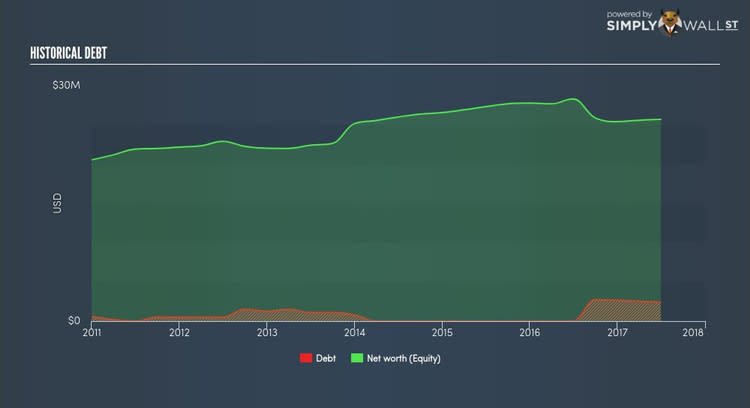Is Wilhelmina International Inc’s (WHLM) Balance Sheet Strong Enough To Weather A Storm?

Investors are always looking for growth in small-cap stocks like Wilhelmina International Inc (NASDAQ:WHLM), with a market cap of USD $35.05M. However, an important fact which most ignore is: how financially healthy is the company? The significance of doing due diligence on a company’s financial strength stems from the fact that over 20,000 companies go bankrupt in every quarter in the US alone. Thus, it becomes utmost important for an investor to test a company’s resilience for such contingencies. In simple terms, I believe these three small calculations tell most of the story you need to know. See our latest analysis for WHLM
Does WHLM generate an acceptable amount of cash through operations?
While failure to manage cash has been one of the major reasons behind the demise of a lot of small businesses, mismanagement comes into the light during tough situations such as an economic recession. These catastrophes does not mean the company can stop servicing its debt obligations. We can test the impact of these adverse events by looking at whether cash from its current operations can pay back its current debt obligations. In the case of WHLM, operating cash flow turned out to be 0.59x its debt level over the past twelve months. A ratio of over 0.5x is a positive sign and shows that WHLM is generating more than enough cash from its core business, which should increase its potential to pay back near-term debt.
Does WHLM’s liquid assets cover its short-term commitments?
What about its commitments to other stakeholders such as payments to suppliers and employees? In times of adverse events, WHLM may need to liquidate its short-term assets to pay these immediate obligations. We test for WHLM’s ability to meet these needs by comparing its cash and short-term investments with current liabilities. Our analysis shows that WHLM does not have enough liquid assets on hand to meet its upcoming liabilities. Though this is a common practice, since cash is better utilized invested in the business or returned to shareholders, it does raise some concerns for investors should adverse events arise.
Does WHLM face the risk of succumbing to its debt-load?
A substantially higher debt poses a significant threat to a company’s profitability during a downturn. In the case of WHLM, the debt-to-equity ratio is 9.34%, which means debt is low and does not pose any significant threat to the company’s operations. No matter how high the company’s debt, if it can easily cover the interest payments, it’s considered to be efficient with its use of excess leverage. A company generating earnings at least three times its interest payments is considered financially sound. In WHLM’s case, its interest is not sufficiently covered by its profits as the ratio is 0.89x. Debtors may be less inclined to loan the company more money, giving WHLM less headroom for growth through debt.
Next Steps:
Are you a shareholder? WHLM’s high cash coverage and conservative debt levels indicate its ability to utilise its borrowings efficiently in order to generate ample cash flow. But it is still important for shareholders to understand why the company isn’t increasing its cheaper cost of capital to fund future growth, especially when liquidity may also be an issue. You should take a look at WHLM’s future growth analysis on our free platform. to properly assess the company’s position in further detail.
Are you a potential investor? WHLM’s high cash coverage and low levels of debt indicate its ability to use its borrowings efficiently in order to produce a healthy cash flow. However, in the event of adversity, the company may struggle to meet its short-term obligations due to its low liquidity in assets. You should continue your analysis by taking a look at WHLM’s past performance analysis on our free platform to figure out WHLM’s financial health position.
To help readers see pass the short term volatility of the financial market, we aim to bring you a long-term focused research analysis purely driven by fundamental data. Note that our analysis does not factor in the latest price sensitive company announcements.
The author is an independent contributor and at the time of publication had no position in the stocks mentioned.

